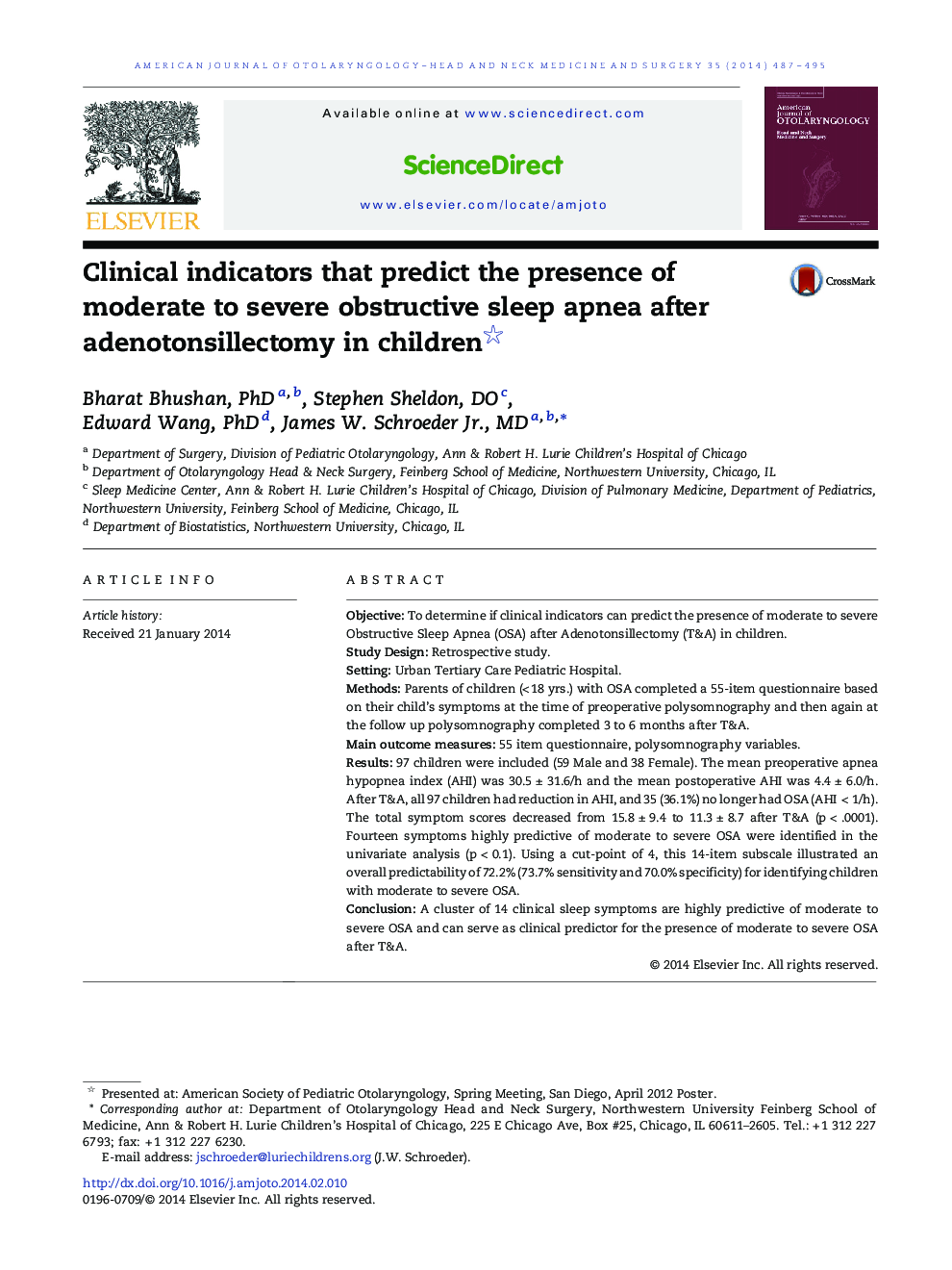| Article ID | Journal | Published Year | Pages | File Type |
|---|---|---|---|---|
| 4103085 | American Journal of Otolaryngology | 2014 | 9 Pages |
ObjectiveTo determine if clinical indicators can predict the presence of moderate to severe Obstructive Sleep Apnea (OSA) after Adenotonsillectomy (T&A) in children.Study DesignRetrospective study.SettingUrban Tertiary Care Pediatric Hospital.MethodsParents of children (< 18 yrs.) with OSA completed a 55-item questionnaire based on their child’s symptoms at the time of preoperative polysomnography and then again at the follow up polysomnography completed 3 to 6 months after T&A.Main outcome measures55 item questionnaire, polysomnography variables.Results97 children were included (59 Male and 38 Female). The mean preoperative apnea hypopnea index (AHI) was 30.5 ± 31.6/h and the mean postoperative AHI was 4.4 ± 6.0/h. After T&A, all 97 children had reduction in AHI, and 35 (36.1%) no longer had OSA (AHI < 1/h). The total symptom scores decreased from 15.8 ± 9.4 to 11.3 ± 8.7 after T&A (p < .0001). Fourteen symptoms highly predictive of moderate to severe OSA were identified in the univariate analysis (p < 0.1). Using a cut-point of 4, this 14-item subscale illustrated an overall predictability of 72.2% (73.7% sensitivity and 70.0% specificity) for identifying children with moderate to severe OSA.ConclusionA cluster of 14 clinical sleep symptoms are highly predictive of moderate to severe OSA and can serve as clinical predictor for the presence of moderate to severe OSA after T&A.
